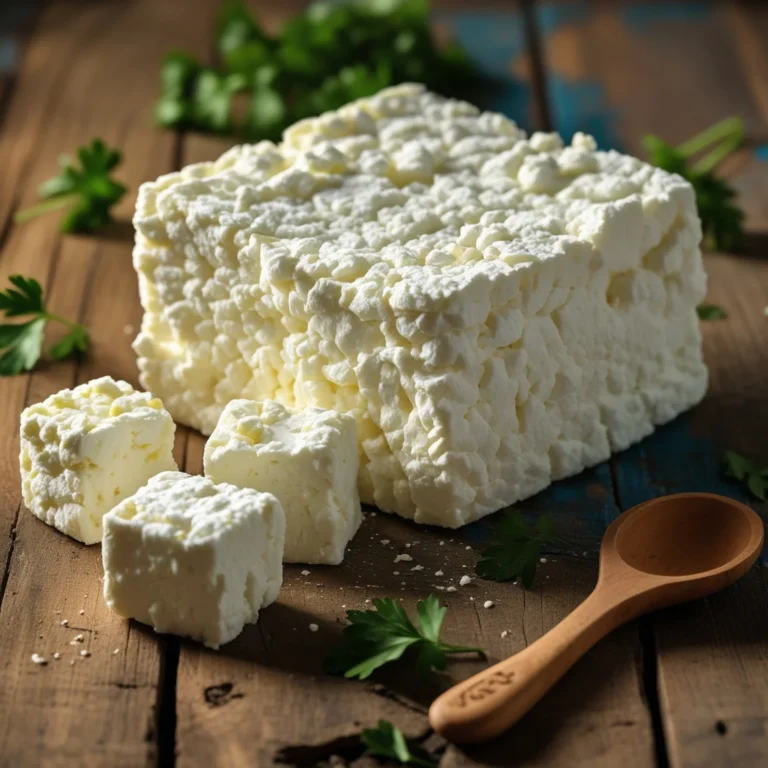Carnivore Diet: Food List, Benefits, Risks, and More
Carnivore Diet: Food List, Benefits, Risks, and More. The carnivore diet consists entirely of meat and animal products, excluding all other foods. It’s claimed to aid weight loss, mood issues, and blood sugar regulation, among other health issues.
However, the diet is extremely restrictive and likely unhealthy in the long term. Plus, no research backs its purported benefits.
The carnivore diet eliminates all foods except meat and animal products. Thus, it’s low in vitamin c, folate, has no fiber, and is difficult to maintain. You should follow a well-rounded diet instead.

Carnivore Diet
A groundbreaking approach to nutrition that will help you break away from traditional dietary habits that leave you sick, weak, tired, or depressed!
Challenge everything you thought you knew about health, learn how to safely adopt a meat-based diet, and walk away with all the tools you need to achieve lifelong success.
This article reviews the carnivore diet, including what the diet includes, whether it can aid weight loss, and its potential benefits and downsides.
Summary:
The carnivore diet includes only meat and animal products, claiming to aid weight loss and health issues, but it’s highly restrictive, lacks key nutrients like vitamin C and fiber, and is unsupported by research. A balanced diet is recommended instead.
What is the carnivore diet?
The carnivore diet is a restrictive diet that only includes meat, fish, and other animal foods like eggs and certain dairy products.
It excludes all other foods, including fruits, vegetables, legumes, grains, nuts, and seeds. Its proponents also recommend eliminating or limiting dairy intake to foods that are low in lactose — a sugar found in milk and dairy products — such as butter and hard cheeses.
The carnivore diet stems from the controversial belief that human ancestral populations ate mostly meat and fish and that high-carb diets are to blame for today’s high rates of chronic disease.

Other popular low-carb diets, like the keto and paleo diets, limit but don’t exclude carb intake. However, the carnivore diet aims for zero carbs. Shawn Baker, an American orthopedic doctor, is the most well-known proponent of the carnivore diet.
He cites testimonials from those who follow the carnivore diet as proof that it can treat depression, anxiety, arthritis, obesity, diabetes, and more. However, no controlled studies have analyzed the effects of the carnivore diet.
Chia Seeds: A Superfood Packed with Benefits. In the recent times, the science of functional foods is a combination of science and collective needs. It consists of nutrition, food science and medicine that maintains a balance between food and drugs. The word functional food was invented first in Japan at 1984.
One study promoted by Baker asked followers of the diet to fill out a survey on their eating habits and health. The respondents reported satisfaction and beneficial effects.
Summary:
The carnivore diet focuses solely on animal-based foods, excluding fruits, vegetables, and carbs entirely, aiming for zero carbohydrates. While some claim it offers health benefits like improved mood and reduced chronic disease, scientific evidence is limited, relying mainly on testimonials and surveys.
The Carnivore Diet: Pros and Cons
Carnivore Diet: Food List, Benefits, Risks, and More. Fans of the carnivore diet say it has a range of benefits, from weight loss to higher testosterone levels, but there is no evidence for this. That said, here are some of the anecdotally reported pros and scientifically backed cons of the carnivore diet.
Pros
The carnivore diet has also gained some attention for its potential as an anti-inflammatory diet that may benefit people with autoimmune conditions. These claims were fueled by press coverage of the lifestyle guru Jordan Peterson and his daughter, Mikhaila Peterson, who have both publicly stated that a diet of beef, salt, and water relieved them of ailments that include rheumatoid arthritis, depression, anxiety, gastric reflux, and psoriasis.
Again, no scientific evidence supports those claims, and anti-inflammatory diets traditionally tend to be plant-based, research shows.
Cons
There are a lot of downsides to the carnivore diet,” says Liz Weinandy, MPH, RDN, a dietitian at The Ohio State University Wexner Medical Center in Columbus. “We have multiple food groups for a reason: They each provide us with a range of nutrients.” Humans are omnivores, which means we derive nutrients from a variety of foods, both animal- and plant-based. Eating only one food group is a problem, no matter which one (even if it’s just vegetables). Limiting yourself to all meat can cause you to run low in certain nutrients that are abundant in plants, like vitamin C and vitamin E, Weinandy says.
Here are some of the main risks:
Constipation Although some anecdotal reports suggest that constipation isn’t a problem on a carnivore diet, you will be missing out on fiber, a nutrient important for colonic health, says Weinandy.
Gastric Cancer A diet high in red and processed meats has been linked to an increased risk of gastric cancer. A meta-analysis of 42 studies reported that while case-control studies on red and processed meat consumption do show this association, cohort studies — a type of observational study — do not.
Eating Disorders Another consideration: Extreme restriction or labeling foods “good” or “bad” can also set off disordered-eating behaviors or full-blown eating disorders, Weinandy says.
In Summary
Because there is no research on the long-term safety or risks involved with following this kind of diet for an extended period of time, it is not wise to do so. If you’re prone to disordered eating, you should avoid this or any fad diet. Anyone who has a chronic disease, such as diabetes or heart disease, should talk to their doctor before trying an extreme diet like this one. Lastly, do not follow the carnivore diet if you have any level of kidney disease.
The World Health Organization (WHO) defines a healthy diet as one that includes fruits, vegetables, legumes, nuts, and whole grains — all foods that are sources of carbohydrates — and prioritizes unsaturated fats, such as fish and avocado, while limiting saturated fat from fatty meat and butter.
How Much Does the Carnivore Diet Cost?
The carnivore diet is an expensive diet because meat, in particular the low-fat red meats that are optimum for this diet, tend to be quite pricey. The same goes for fish and seafood. Since you have to eat meat and fish three times a day, the cost can add up pretty quickly.
A Detailed Carnivore Diet Food List
A meat-only diet is pretty self-explanatory since you’re going to be eating only meat and fish. Nonetheless, as with all diets, there are a few gray areas.
Top 10 Foods to Eat
Here’s what you’ll be eating: Red meat (beef, pork, lamb), with an emphasis on fattier cuts of meat so you’ll take in enough calories.
Top options include:
- Organ meats
- Poultry
- Fish
- Eggs
- Lard
- Bone marrow and bone broth
- Butter
- Salt and pepper
- Water
- Sauces or gravies, provided they are made only with meat drippings that are mixed with butter or ghee and no binders like flour
Top 10 Foods to Limit or Avoid
Anything else that isn’t meat, poultry, or fish or derived from one of those is not allowed on the carnivore diet. Top foods to limit or avoid include:
- Vegetables
- Fruit
- Seeds
- Nuts
- Legumes
- Bread
- Pasta
- Grains
- Probiotics
- Alcohol
Question: What is the carnivore diet, and is it safe?
Answer: The carnivore diet meal plan only allows consumption of meat, poultry, eggs, seafood, fish, some dairy products, and water. You need to exclude all vegetables, fruits, grains, legumes, seeds, and nuts. That’s why it is sometimes referred to as the “zero carb” diet.
The carnivore diet is a type of “keto,” or ketogenic, diet. Keto diets work like this: The contents of a keto diet do not provide enough calories from glucose and other forms of sugar. To compensate, the body burns fat that creates ketones as an energy source. Ketones are released into the bloodstream, which lowers the normal acid-base balance in blood to make it more acidic, a state known as ketosis.
Carnivore Diet Food List
The carnivore diet gives you a list of allowed foods to help with grocery shopping. It includes:
Beef
- Brisket
- Chuck roast
- Ground beef
- Steaks like New York strip, ribeye, skirt, porterhouse, and T-bone
Chicken and pork
- Chicken breast, thighs, drumsticks, and wings
- Rotisserie chicken
- Pork butt
- Pork chops
- Bacon
- Pork ribs
- Pork shoulder
Lamb
- Lamb chops
- Lamb shanks
- Ground lamb
Seafood
- Fish like salmon, trout, and mackerel
- Clams
- Crabs
- Mussels
- Oysters
- Scallops
- Shrimp
- Lobster
Organ meats
- Liver
- Kidneys
- Tongue
- Oxtail
- Heart
- Feet
- Cheeks
Foods to eat in limited amounts
- Cheese
- Eggs
- Heavy cream
- Milk
- Yogurt
- Bacon
- Sausage
- Cured meats
Sample menu
The carnivore diet is difficult to follow long term and does not offer much variety.
Here’s a five-day sample menu for the carnivore diet:
Day 1
- Breakfast: eggs, bacon, sardines
- Lunch: turkey burger patty, salmon jerky, beef tips
- Dinner: filet mignon, crab, chicken liver
- Snacks: a small amount of Parmesan cheese, jerky
Day 2
- Breakfast: shrimp, eggs, a small glass of heavy cream
- Lunch: strip steak, tuna fish, beef jerky
- Dinner: lamb chops, scallops, beef liver
- Snacks: a small amount of hard Cheddar cheese, bone broth
Day 3
- Breakfast: eggs, salmon, turkey sausage
- Lunch: sweetbreads, pork chops, mackerel
- Dinner: turkey burger patty, a small amount of Parmesan cheese, bone marrow
- Snacks: hard-boiled eggs, shrimp
Day 4
- Breakfast: trout, shredded chicken, bacon
- Lunch: beef meatballs, small amount Cheddar cheese, salmon jerky
- Dinner: crab cooked in lard, filet mignon
- Snacks: sardines, beef jerky
Day 5
- Breakfast: eggs, chicken and turkey sausage links
- Lunch: lamb roast, chicken liver, pork chop
- Dinner: flank steak, scallops cooked in butter, a small glass of heavy cream
- Snacks: bone broth, turkey jerky





